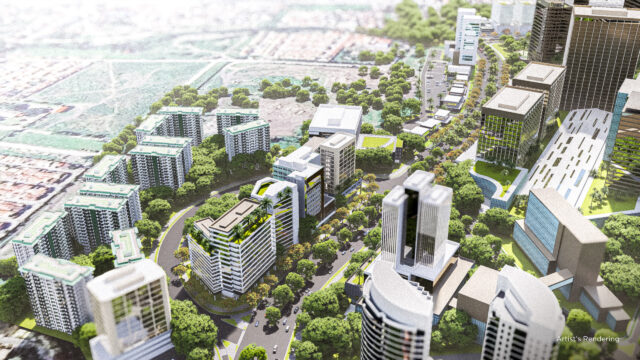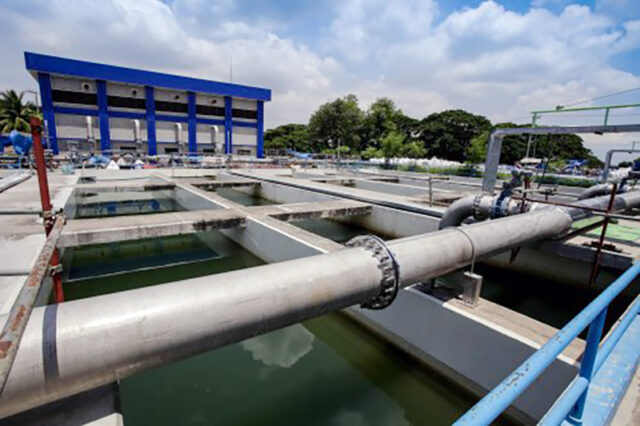The Philippine Statistics Authority (PSA) has confirmed what many had feared all along: the Philippine economy is losing steam. Real gross domestic product (GDP) growth slowed sharply to 4% in the third quarter of 2025, down from 5.5% in the previous quarter and 5.2% in the same period last year. With this performance, the economy’s year-to-date average is only 5%, well below the government’s already downgraded target of 5.5-6.5%.
If a modern-day Daniel were standing in the king’s court, he would read this as the first of the writing on the wall — a warning that the country’s growth trajectory is faltering, not because of fate, but because of choices.
1ST: FADING GROWTH PROSPECTS
Department of Economy, Planning, and Development (DEPDev) Secretary Arsi Balisacan now concedes that even the lower end of the target range may be a tall order. To reach 5.5%, the economy would need to grow by 6.9% in the last quarter, a heroic and unrealistic feat given the weak macroeconomic environment. While the Philippines struggles to maintain momentum, regional neighbors such as Taiwan, South Korea, and Vietnam have posted stronger rebounds, driven by robust exports, revitalized investment, and more decisive policy execution.
The contrast is telling. These economies are immune neither to global headwinds nor to climate change, but they have built resilience through coherent planning, predictable governance, and sustained confidence from both domestic and foreign investors. The Philippines, by comparison, continues to grapple with policy uncertainty, under-execution of public programs, and a trust deficit that dampens business sentiment. This divergence in performance is not inevitable — it is the product of governance.
2ND: THE WEAKNESS OF PUBLIC SPENDING
The second message on the wall is the failure of public expenditure to deliver growth. Government spending, especially on capital outlays, has lost vigor. Infrastructure investment, long heralded as the backbone of the country’s development agenda, has slowed to a crawl amid corruption probes and procedural paralysis.
The ongoing investigations into flood control project anomalies have had a chilling effect across multiple layers of government. Local and national agencies alike are reluctant to initiate new projects for fear of being caught in the dragnet of scrutiny. While accountability is vital, the unintended consequence has been a virtual freeze in implementation. As a result, construction output barely grew by 0.5% in the third quarter, dragging down the entire industrial sector.
Meanwhile, fiscal capacity is eroding. The Bureau of Internal Revenue (BIR) is poised to miss its P3.219-trillion collection target, widening the fiscal deficit, which already reached P1.117 trillion, or nearly 72% of the full-year ceiling of P1.56 trillion, by the third quarter. With such shortfalls, the government will have little choice but to borrow more, further swelling the national debt, which stood at P17.46 trillion, equivalent to 63.1% of GDP, as of September 2025.
Debt servicing alone absorbed P1.787 trillion in the first three quarters, P1.121 trillion in principal and P666 billion in interest payments. Every peso used to pay old debts is a peso diverted from classrooms, hospitals, and roads. This is not just a fiscal issue; it is a moral one. The inability to spend effectively, and the tendency to spend wastefully, erodes both economic capacity and public trust.
3RD: THE SOFTENING OF PRIVATE DEMAND
The third warning comes from private consumption which drives over 70% of the nation’s output. Household spending decelerated to 4.1% in the third quarter, down from 5.3% in the previous quarter and 5.2% a year earlier. Real wages have barely kept up with inflation, and cash remittances, a traditional lifeline for domestic consumption, have expanded only marginally.
Consumer sentiment has weakened under tighter financial conditions, high household debt, and uncertainty about job prospects. Business investment, too, remains cautious amid the perception of a difficult regulatory environment and a politicized bureaucracy.
Even the apparent stability in prices is fragile. The state of national calamity declared by President Ferdinand Marcos, Jr. has temporarily frozen the prices of basic commodities for 60 days starting Nov. 6, a short-term reprieve that masks deeper structural pressures on food and energy supply chains. The moderation in household consumption, the country’s primary growth engine, constitutes the third writing on the wall.
4TH: A SHRINKING PRODUCTIVE BASE
On the supply side, the story is equally sobering. The services sector continues to anchor expansion, growing at 5.5%, but agriculture remains stagnant at under 3%. The industrial sector, however, has become the real drag, eking out a meager 0.7% growth. Manufacturing barely rose 1.2%, and construction inched forward 0.5%, while mining and quarrying showed more life at 4.4%.
The share of industry in GDP declined from 26.7% to 25.9%, signaling structural weakness and waning competitiveness. Business and consumer confidence indices from the Bangko Sentral ng Pilipinas (BSP) point consistently downward. The Purchasing Managers’ Index dipped below 50, indicating a contraction in manufacturing activity. Meanwhile, the stock market continues to underperform compared with its regional counterparts, reflecting investor hesitation and, yes, fatigue.
Without renewed confidence, the Philippines risks being trapped in a low-growth equilibrium where weak demand discourages investment, low investment suppresses productivity, and low productivity ensures continued weakness in demand.
5TH: A VULNERABLE FINANCIAL SECTOR
The only sector seemingly unscathed is banking and finance, which still enjoys solid capital buffers, ample liquidity, and strong deposit growth. Non-performing loans (NPLs) remain contained, with coverage ratios near 95%. However, this stability is not immune to macroeconomic decay. If growth remains sluggish and fiscal management continues to wobble, the accumulation of bad loans could rise, undermining balance sheets and financial confidence.
History reminds us that financial resilience can erode swiftly once the real economy weakens. A sustained slowdown could expose vulnerabilities in asset quality, especially in real estate and construction lending, amplifying the distress already visible in the productive sectors.
THE FINAL MESSAGE: GOVERNANCE, CORRUPTION, AND THE PATH TO REFORM
The true roots of these problems lie not merely in statistics but in governance. Economic growth falters when institutions fail, when public funds leak through corruption, and when policy credibility collapses under the weight of corruption and political expediency.
Ghost projects, overpriced procurements, and unaccountable spending continue to haunt the national budget. They represent not isolated incidents but a systemic failure that robs the nation of its future. The cost is not just financial; it is human — measured in overcrowded hospitals, under-resourced schools, and communities vulnerable to floods that should have been prevented by honest infrastructure spending.
The country’s economic challenge, therefore, is inseparable from its governance crisis. And while floods and earthquakes and climate change could be challenging, by no means should those in authority blame them for failed leadership and failure to deliver. To reverse the decline, the Philippines needs more than stimulus packages or policy slogans. It needs meaningful reforms anchored on transparency, accountability, and efficiency.
To be sure, such reforms are not new. They have been written in countless annual reports and promised in countless speeches. What is new is the urgency, the urgency to produce results, the urgency to show integrity in public service. Without them, the economy will continue to drift, growing below potential, lagging behind neighbors, and burdened by an ever-heavier debt load.
READING THE WRITING BEFORE IT FADES
The Philippines is not doomed to simply wither away. It still has a dynamic workforce, entrepreneurial energy, and a young demographic profile that, if supported by sound and serious policies, could propel it toward inclusive prosperity. But optimism without reform is denial.
The writing on the wall is clear: slowing growth, weak spending, waning confidence, and rising debt. To ignore them is to invite the fate of kingdoms like Nebuchadnezzar’s ancient Babylon that once refused to listen until it was too late.
Economic growth is not an illusion; it is an outcome of good governance. The choice, as always, lies not in fate but in intentional leadership.
Diwa C. Guinigundo is the former deputy governor for the Monetary and Economics Sector, the Bangko Sentral ng Pilipinas (BSP). He served the BSP for 41 years. In 2001-2003, he was alternate executive director at the International Monetary Fund in Washington, DC. He is the senior pastor of the Fullness of Christ International Ministries in Mandaluyong.












